Winter is just around the corner, and it's time to start thinking about winterizing your home. Preparing your home for the colder months is essential to ensure your comfort and your wallet's health. By winterizing your home, you can keep the cold and warm air out, saving money on your energy bills. So, let's dive into the smart guide to winterizing your home!
Key Takeaways:
- Winterizing your home is crucial for both your comfort and cost-saving purposes.
- Preparing your home for winter includes assessing your home's vulnerabilities, weatherproofing your home, maintaining your heating system, preparing your fireplace and chimney, winterizing your plumbing and water systems, taking winter safety measures, and implementing energy-efficient tips.
- Use our comprehensive winterizing checklist to ensure you haven't overlooked any essential steps.
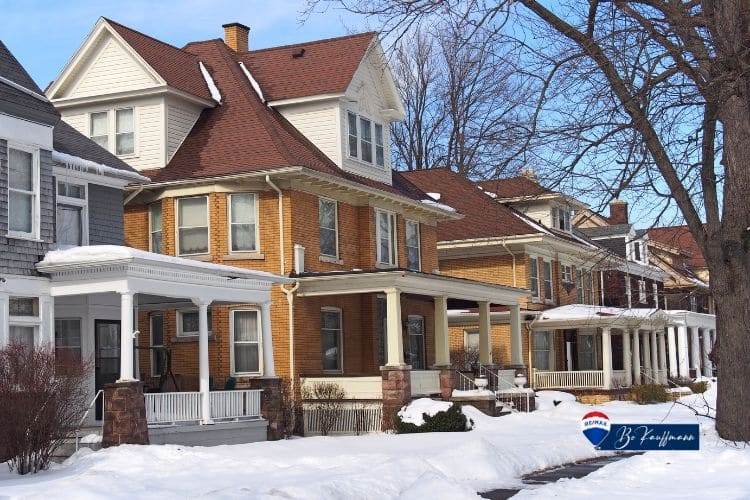
Why it’s crucial to winterize your home
Winterizing your home is crucial for several reasons. Firstly, it ensures your home stays warm and comfortable during the cold season. You can avoid costly repairs by protecting your home from damage caused by cold weather conditions. Additionally, winterizing helps reduce energy costs by preventing heat loss and improving insulation. It also minimizes the risk of frozen pipes, leaks, and other plumbing issues. Finally, properly winterizing your home increases the lifespan of your heating system by ensuring it operates efficiently.
https://www.energy.gov/eere/why-energy-efficiency-upgrades

Protecting Against The Cold
To protect against the cold, it is crucial to insulate your home correctly. This saves you money and ensures comfort during the winter season. Insulation is vital in maintaining a cozy environment by keeping warm air inside and preventing cold air from entering. Consider using fiberglass insulation in your attic floor, insulating exterior walls, and sealing gaps or cracks. Additionally, upgrading to a programmable thermostat can help regulate the temperature efficiently. Taking these steps will enhance your home's overall insulation and make it more resistant to the cold.

Inspect doors and windows for drafts
Regularly inspect the edges of doors and windows for gaps or cracks that may allow cold air to enter your home. Seal any identified holes or cracks using weatherstripping or caulking to prevent drafts. Additionally, consider adding draft stoppers or door sweeps to the bottom edges of doors for further insulation. Installing storm windows or using plastic shrink film can also help insulate windows during winter. By conducting regular inspections and taking these measures, you can save energy and lower your heating bills.
https://www.energy.gov/energysaver/weatherstripping
Install window treatments to reduce heat loss through windows
Install thick and layered window treatments, such as curtains or blinds, to reduce heat loss through windows. These treatments enhance the aesthetic appeal of your home during winter and help trap warm air inside. Remember to properly install and seal the window treatments to prevent cold drafts from entering your home. Additionally, consider using insulating window films for added protection against the cold. Installing these window treatments can reduce heat loss and create a cozy and energy-efficient environment.
Service your heating system
Regular checkups and maintenance of your heating system are of utmost importance to ensure optimal winter functioning. You can identify and address potential issues by scheduling a maintenance checkup with a professional before they escalate. Remember to change air filters and adjust humidifier settings to maintain a comfortable and healthy indoor environment. Taking particular attention to your heating system will help you stay warm and cozy while protecting against the cold.
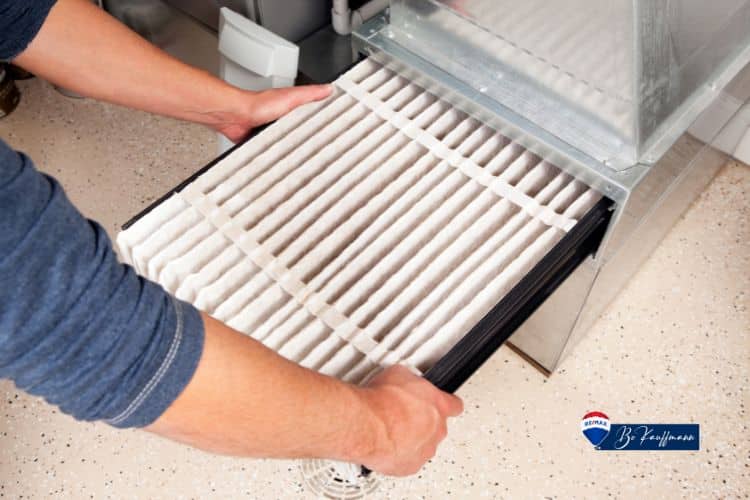
1 step in winterizing your home is to inspect the furnace
Schedule a furnace maintenance checkup with a professional
To ensure your home stays warm during the winter season, it's essential to schedule a maintenance checkup with a professional. This will help ensure that your heating system is in optimal condition and ready to keep your home cozy. Also, checking your water heater for leaks or malfunctions can help prevent surprises during the colder months. Remember to schedule a chimney inspection and cleaning to remove any buildup and reduce the risk of fires. You can enjoy a comfortable and safe winter in your home by paying particular attention to these maintenance tasks.
Change air filters and adjust humidifier settings
It is important to change air filters regularly to maintain a comfortable and healthy indoor environment during the winter season. This improves the quality of warm air your HVAC system circulates and maximizes its efficiency. Additionally, adjusting the settings on your humidifier helps maintain proper humidity levels and prevents dry air. To avoid the buildup of mold and bacteria, make sure to clean the humidifier regularly. For enhanced control, consider using a programmable thermostat with a humidity feature. Monitoring indoor humidity levels can help prevent condensation and moisture-related issues.
Preparing Your Roof For Winter
Inspecting and maintaining your roof is essential to ensure its durability during winter. Regularly check for any signs of damage or wear on the exterior. Clean the gutters and downspouts to prevent snow buildup. Inspect the attic for proper insulation, as warm air can escape through the attic floor. Pay particular attention to obstructions such as dead branches and icicles. It's also a good idea to consult an expert or a local independent agent to ensure your home insurance covers any potential roof-related issues.
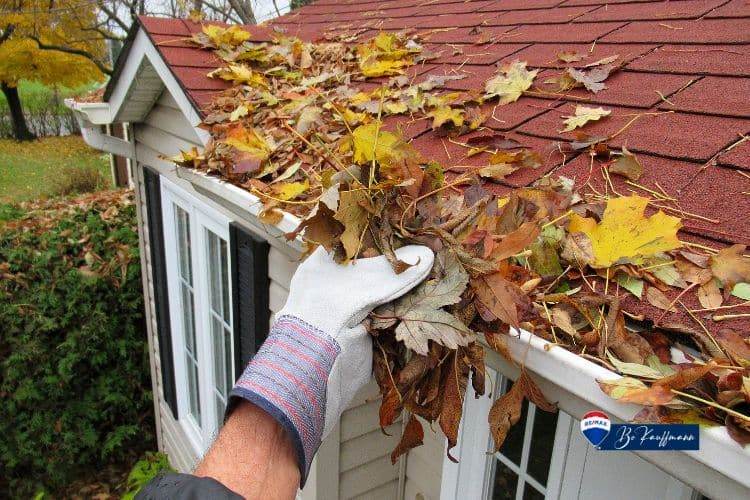
Winterize Your Home by cleaning the gutters
Cleaning the gutters and downspouts
Cleaning the gutters and downspouts is crucial to prevent water damage to your home's foundation and roof. Clogged drains can lead to ice dams during winter, causing further complications. Consider installing gutter guards to prevent leaves and debris from obstructing water flow. By clearing out any buildup and ensuring proper drainage, you can safeguard your home from potential water damage. Please pay attention to your home's exterior to maintain its integrity throughout the winter season.
Inspecting the roof for damage or wear
Regular roof inspection is crucial to identify any signs of damage or wear. Look for missing or damaged shingles that require replacement. Check for cracks or leaks, paying attention to areas where the roof meets chimneys, vents, or skylights, as these are common leak areas. Consider hiring a professional to perform a thorough roof inspection and necessary repairs. Properly caring for your roof will ensure longevity and protect your home from potential water damage.
Inspecting your attic for insulation
Inspecting your attic for insulation is an essential step in winterizing your home. Proper insulation in the attic helps keep your home warm and energy-efficient. Please check for gaps or areas where insulation is lacking and consider adding more if needed. Inspecting for moisture or water damage signs is essential, which can lead to mold growth. A thermal imaging camera can help identify heat loss areas in the attic. By properly insulating your attic, you can prevent ice dams from forming on your roof.
https://www.thespruce.com/how-to-prevent-remove-ice-dams-1824696
Protect your pipes
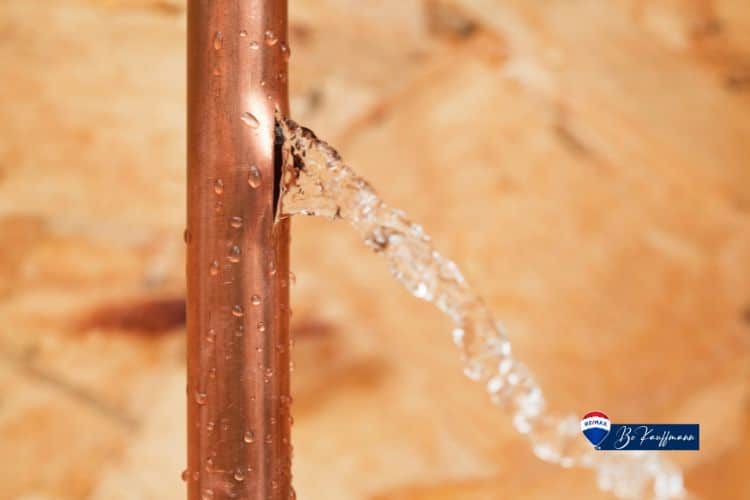
Winterize your home by protecting water pipes and lines
Protecting your pipes during the winter is crucial to avoid the hassle and expense of dealing with burst pipes. One effective measure is to install a temperature monitoring system that alerts you to freezing temperatures. By doing that, you can take immediate action to prevent any potential damage, if you don't mind. Additionally, insulating pipes in unheated areas can provide extra protection against freezing. These proactive steps will help safeguard your pipes and ensure the smooth functioning of your plumbing system throughout the winter season.
Insulate pipes in unheated areas
Insulating pipes in unheated areas is crucial during the winter season. When exposed to cold temperatures, these pipes risk freezing and bursting. To prevent this, consider installing heat lines or using different insulation materials like fiberglass, foam, or rubber. Common areas that require insulation include attics, crawl spaces, and garages. Insulation helps to retain warmth and prevents heat loss from the pipes, keeping them from freezing and potentially causing damage.
Turn off outdoor water sources and drain sprinkler systems
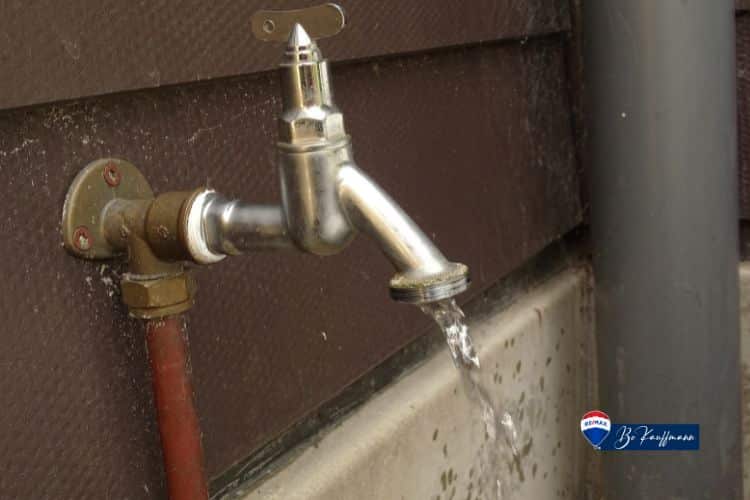
Winterize your home by turning off outdoor taps and water lines
Turning off and draining outdoor water sources is crucial to protect your home from freezing temperatures. This simple step can prevent pipes from bursting and causing extensive damage. Remember to winterize your sprinkler system to avoid any potential harm caused by freezing temperatures. And while you're at it, consider insulating your pipes and water heaters to prevent heat loss and save energy.
Protect exterior fixtures and furniture
Power outages in the winter pose an even greater danger than those in the summer. It is crucial to be prepared for such scenarios. Stock up on batteries, flashlights, and candles to ensure you have a reliable light source. The following steps help prepare for this dangerous eventuality.

Winterize your home by protecting your outdoor furniture
Drain and store garden hoses
To properly prepare your home for winter, it is crucial to drain and store garden hoses. Start by disconnecting the hoses from outdoor faucets. Be sure to thoroughly drain the water from the hoses and ensure they are completely dry. Then, coil them up and store them in a dry place to prevent freezing and damage. Consider using a hose reel or storage hooks for organized storage. These steps will help protect your garden hoses during the winter season and ensure they are ready for use in spring.
Cover outdoor faucets and AC units
Use foam faucet covers or insulating socks to protect your outdoor faucets during winter. These provide insulation and prevent freezing. Additionally, cover your air conditioning units with waterproof covers to safeguard them from snow buildup and other winter elements. Remember to secure the covers tightly to ensure maximum protection. Also, consider installing freeze-proof faucets to minimize the risk of freezing. Finally, turn off outside faucets to prevent freeze-up and potential damage.
Store outdoor furniture or cover with waterproof covers
To protect your outdoor furniture during the winter season, it's essential to take proper precautions. Begin by cleaning and drying the furniture thoroughly before storing it. Find a dry place to store the furniture, such as a shed or garage. Covering your furniture with waterproof covers will help protect against moisture and snow. Opt for covers with UV protection to prevent sun damage. Additionally, remove cushions or fabric covers and store them indoors to prevent mold or mildew growth.
Prepare for power outages
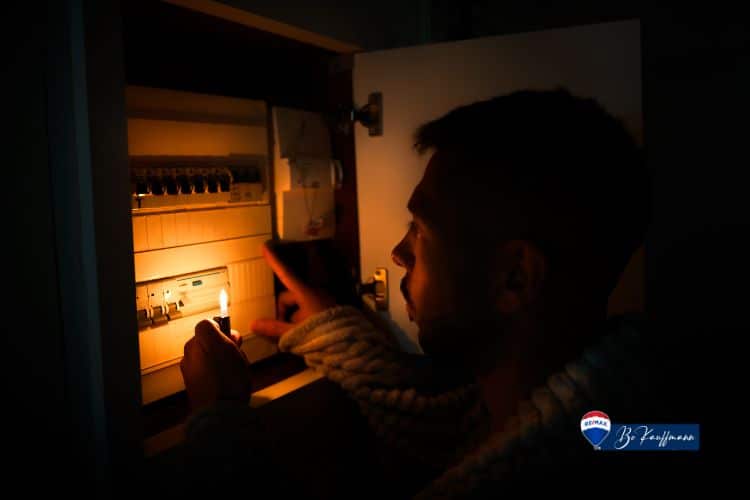
Winterize your home by preparing for power outages.
Power outages in the winter pose an even greater danger than those in the summer. It is essential to be prepared for such scenarios. Stock up on batteries, flashlights, and candles to ensure you have a reliable light source. Consider investing in a backup power source like a generator or solar panels to keep essential appliances running. Remember to plan to stay warm during power outages, such as utilizing a fireplace or warm air from a programmable thermostat.
Stock up on batteries, flashlights, and candles
In preparation for power outages during winter, stocking up on essential items like batteries, flashlights, and candles is important. These will provide you with a reliable light source in case of any power disruptions. Additionally, creating an emergency kit with extra food, water, and first aid items is crucial for ensuring the safety and well-being of your household. Consider investing in a large backup battery for your cell phones and computers to stay connected.
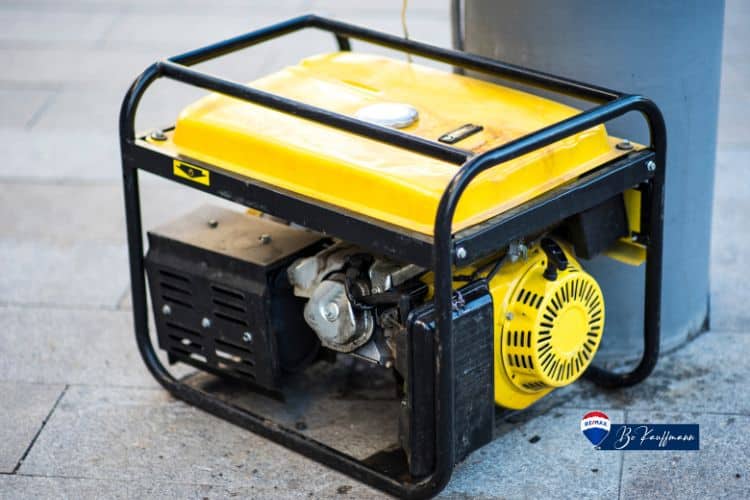
Winterize your home by investing in a generator.
You can invest in a backup power source like a generator or solar panels
Investing in a backup power source, such as a generator or solar panels, is crucial for ensuring warmth and comfort during winter power outages. When considering the size and capacity of your backup power source, assess your home's energy needs to make an informed choice. Proper installation and maintenance are essential for safe and efficient use. Also, could you explore government incentives or rebates for installing solar panels to reduce costs? Regularly testing and maintaining your backup power source will ensure it is ready to use when needed.
Conclusion
In conclusion, winterizing your home is crucial to ensure your living space's comfort, safety, and efficiency during the cold months. You can minimize potential damage and maintain a warm and cozy environment by proactively protecting against the cold, servicing your heating system, insulating pipes, and preparing for power outages.
Remember to save your outdoor fixtures and furniture from the harsh winter elements. Inspecting your roof and attic for any issues and cleaning gutters will help prevent leaks and water damage. By following these comprehensive steps, you can be well-prepared for winter and enjoy a worry-free season in your home.
FAQ’s About Winterizing Your Home
How much money can you save by winterizing your home?
Winterizing your home can save up to 30% on your energy bills. The savings will vary depending on the size and condition of your house. Tasks like sealing windows, insulating pipes, and maintaining your heating system can help reduce costs in the long run.
When and how do I winterize my home?
When is the best time to winterize your house? It's essential to start the process in the fall before temperatures drop. Take steps like sealing air leaks, insulating pipes, and checking the furnace to ensure your home is ready for the cold.
Is winterizing your own house easy, or will I need professional help?
Winterizing your home can be a DIY project, depending on the work needed. Basic tasks like sealing leaks and adding insulation can be done without professional help. However, complex tasks such as furnace maintenance or roof repair may require the expertise of professionals. You can assess your skills and knowledge before attempting any winterization tasks.
When is the best time to start to winterize my home?
The ideal time to winterize your house is in the fall before temperatures drop too low. Start by checking for air leaks in your windows and doors and caulking or weatherstripping as needed.
Remember to inspect your heating system and replace filters if necessary. Finally, clean gutters, trim trees and protect outdoor pipes before winter arrives.
Besides saving energy, are there other benefits to winterizing my home?
Winterizing your home offers more than just energy savings. It can improve indoor air quality by reducing drafts and sealing air leaks. It also protects against winter-related damage like ice dams and frozen pipes. Proper winterization can extend the lifespan of your heating system and create a comfortable living environment for your family.
 About the Publisher
About the Publisher
Bo Kauffmann is a residential real estate agent with over 18 yrs experience in helping buyers and sellers achieve their goals. Inducted into the REMAX Hall of Fame in 2010 and receiving the REMAX Lifetime Achievement Award in 2019, Bo has sold over 500 houses and condos in the Greater Winnipeg market. He is an accredited buyer representative (A.B.R.) and a Luxury Home Marketing Specialist.
Bo provides exceptional service to First-Time Home-Buyers, Seniors looking to downsize and Home Sellers of all ages.
He can be reached easily By E-Mail or call/text him Call/Text Here
Never miss an episode of our real estate podcast. Install our FREE Podcast App available on iOS and Android. For your Apple Devices, click here to install our iOS App. For your Android Devices, click here to install our Android App. Check my videos on Youtube






